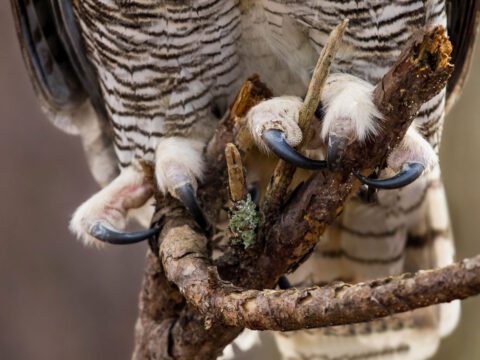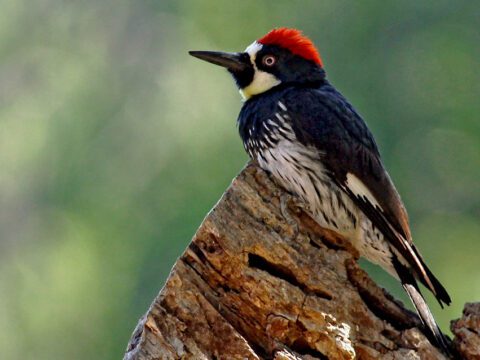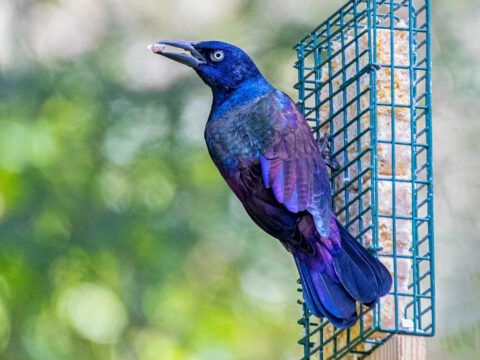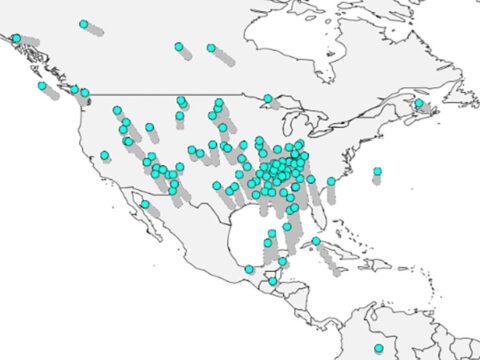When Females Dress Up: Cooperative Breeding Impact on Plumage
By Hugh Powell
January 15, 2010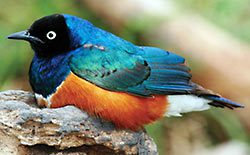
Those of us in North America could be forgiven for regarding starlings as a bit of a let-down: noisy, aggressive, messy, overcrowded, something of a poor neighbor. Africa is different: 45 starling species live there in a fascinating array of colors and lifestyles, from glossy black to steely-blue and red; from regular pair-living birds to rowdy groups that live together and tend up to six nests at once.
That tumult of diversity has recently taught scientists a lesson about sexual selection, suggesting one way female birds can end up looking just as fancy as males. The research, by Dustin Rubenstein, a former student at Cornell now at Columbia University and Irby Lovette, Fuller Director of Evolutionary Biology at the Cornell Lab of Ornithology, appeared this fall in the journal Nature.
Sexual selection refers to the idea that impressing a mate can be as evolutionarily powerful as escaping a predator. Its effects are usually most evident in males; they’re the ones who generally bear antlers, wave fanciful tail feathers, or prance around on leks at five in the morning.
That’s also the pattern for many African starling species, where males look sharp and females wear more muted attire. But in about a third of African starlings, females are as gaudy as their mates. Sexual selection has shaped these females, too—but why the difference?
Sexual selection is strongest when a few individuals produce most of the offspring—as when rams butt heads over access to an entire flock of ewes. Called reproductive skew, it tends to be strongest in males. Females typically are choosier about their mates than males are, and females tend to have more steady reproductive success.
Rubenstein and Lovette noticed that in cooperatively breeding starling species, the balance of reproductive skew has shifted. In their breeding groups, the number of breeding pairs is fixed, and many females don’t get the opportunity to breed each year. On the other hand, unpaired males aren’t entirely out of luck; they still have a chance to father young through infidelity with a paired-up female. Competition for mates is relaxed for males but intensified for females.
Rubenstein and Lovette realized starlings presented a chance for a natural experiment with a built-in control, by comparing the fanciness of male and female plumage in starling species that do and don’t breed cooperatively.
After measuring more than 1,600 museum specimens, they found that cooperatively breeding males and females were closer in both size and plumage than males and females of pair-breeding species. The result paints two different pictures of evolution: among pair-breeders, reproductive skew makes males increasingly showy in an effort to win mates. In cooperative breeders, females have to compete for mates, too, and end up resembling the elaborately coiffed males.
In the past, species with showy females (for example, phalaropes, in which females are brighter than males, and males tend to the nests and young) have been regarded as exceptions to the rule of competitive males and choosy females. Rubenstein’s and Lovette’s study shows sexual selection is more broadly capable of shaping females—it’s all a question of skew.
Originally published in the January 2010 issue of BirdScope.

All About Birds
is a free resource
Available for everyone,
funded by donors like you
American Kestrel by Blair Dudeck / Macaulay Library

